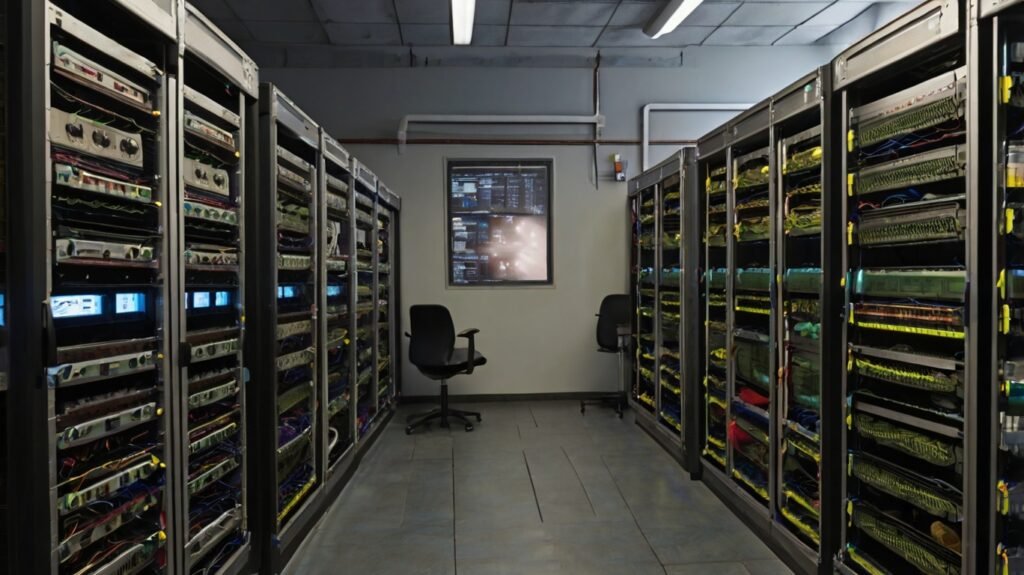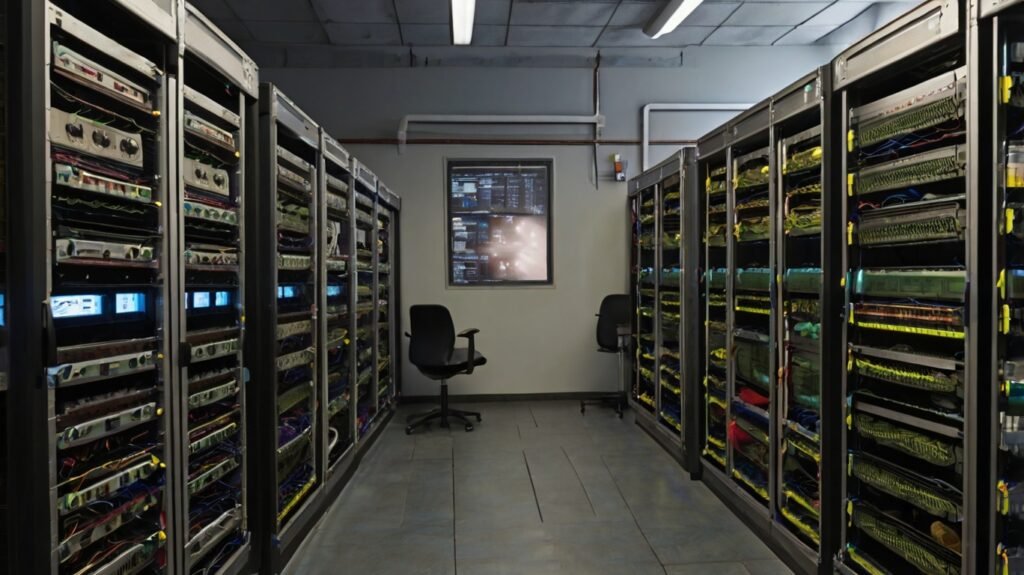When you hear the term “127.0.0.1:4934,” it might seem like a complicated jumble of numbers. But it’s actually a crucial part of networking that every computer user and developer should know about. This IP address, known as the “localhost,” serves as a gateway for testing and troubleshooting within your computer’s network.
Localhost networking, which uses 127.0.0.1, is often used by developers to test websites and applications locally before they go live. In this guide, we’ll break down how it works, its uses, and why it’s important for anyone involved in web development or system administration. By the end of this post, you’ll understand why localhost is so useful and how you can use 127.0.0.1:4934 for your own purposes. So, let’s get started!
What is 127.0.0.1:4934?
127.0.0.1:4934 is an IP address that refers to the localhost of a computer. It’s part of the IPv4 address system and is typically used for testing and development. When you type this address into your browser, it connects to your own computer, allowing you to test applications without being connected to the internet.
The “127.0.0.1” part is the loopback address, which routes the traffic back to your machine. The “:4934” is the port number, used to identify specific services running on your computer. Together, they form a bridge between your computer’s internal systems and applications running locally.
This address is critical for developers. It helps them create and test websites, servers, or databases without needing external resources. Essentially, it’s a safe space for testing before making things live on the web.
What Does 127.0.0.1 Represent?
To understand 127.0.0.1:49342, it’s essential to break it down into two components: the IP address 127.0.0.1 and the port number 49342.
What is 127.0.0.1, the Loopback Address?
127.0.0.1 is known as the loopback address. It’s a special IP address that directs your computer to connect to itself, like a virtual address to talk to your own device.
When you use 127.0.0.1, the data doesn’t go outside your computer but instead loops back to it. It’s mainly used for testing and troubleshooting without needing an internet connection.

How Does Localhost Networking Work?
Localhost networking allows you to connect with services running on your own computer. Using 127.0.0.1 or the term “localhost,” your computer communicates internally, bypassing the need for internet access. This makes it perfect for testing code or checking a new web page.
The key part of networking is the loopback interface. This virtual network device ensures that any requests made to 127.0.0.1 are immediately sent back to the computer. This allows for rapid, secure, and isolated testing.
For example, if you’re running a web server on your machine, you can visit 127.0.0.1:4934 in your browser to see how the server responds. It’s like using your own “sandbox” for trying out different technologies or fixes.
Common Uses of Localhost Networking
One of the most common uses of networking is website and application testing. Developers use it to see how their site will look and perform without exposing it to the public. Developers can make sure their code works perfectly before launching it on a live server.
Another use is in setting up and testing web servers. If you’re running a web server like Apache or Nginx, networking allows you to configure and troubleshoot the server. You can check things like database connections, server responses, and performance—all without needing an external connection.
Additionally, localhost networking is often used to run backend services and APIs. For instance, a developer might use 127.0.0.1 to connect to a local database, test queries, or simulate how data flows through the system. It’s like a lab where all the magic happens before it’s released to the public.

When is 127.0.0.1:49342 Used?
127.0.0.1:49342 is a specific loopback address with a port number. It’s used when a program on your computer needs to communicate with itself through a specific port for testing or local services.
This address and port combination are often used by developers or applications to run tests or simulate network connections without using an actual network. It helps avoid any external traffic and keeps the data local.
Common Uses Include:
Testing and Development
Commonly used for testing purposes. Developers can run applications and test them without needing an actual network connection.
It helps simulate how an app would behave in a real network environment, ensuring no need for external resources during development.
Local Network Services
Another common use for local network services. It allows programs to communicate with each other on the same machine.
This is useful for running web servers, databases, or other services locally to test how they interact before deployment.
Server Binding:
Server binding refers to the process of associating a server application with a specific IP address and port number. This allows the server to listen for incoming requests and handle communication with clients on that address and port.
Client Request:
A client, such as a browser, makes a request to the address. This request is sent to the specified port on the local machine for processing.
Server Response:
The server handles the request and sends back the appropriate content, such as a webpage or JSON data, as a response. This response is then delivered to the client for further use.
How to Set Up Localhost Networking on Your Computer
Setting up LN on your computer is simple. All you need to do is ensure that your computer is connected to the internet (or even offline works). Then, you can test applications locally by using 127.0.0.1 or localhost.

For web developers, the first step is usually to install a server environment like XAMPP, MAMP, or WAMP. These packages include Apache, MySQL, and PHP, which are essential for testing websites locally. Once set up, you can test your website by typing “localhost” or “127.0.0.1:4934” in your browser.
For other types of development, such as API testing, you may need software like Postman or a local database server. These tools allow you to simulate traffic or manage data on your.
How to Troubleshoot Issues with Localhost Networking
Sometimes, Networking can have issues—whether it’s problems with accessing or not being able to connect to your services. One of the first things to check is your firewall settings. If your firewall is too strict, it might block the connection.
Another potential issue could be your local server not running correctly. If you’re using something like XAMPP, make sure all your services (Apache, MySQL, etc.) are started properly. If they aren’t, your browser won’t be able to access the local address.
If the issue persists, clearing your browser cache or restarting your computer might help. Sometimes, small technical glitches can cause problems that are easily fixed with a reset.
Port Conflicts
If another program is using port 49342, a conflict happens, and a different port will be needed.
Firewall Restrictions
Firewalls can block access to specific ports, including those on the loopback address, so firewall settings need adjustment.
Application Errors
Connection errors may arise if the server isn’t set up properly to listen on 127.0.0.1:49342.
Best Practices Should You Follow with 127.0.0.1:49342
When using, always ensure the port is not already in use by other applications. This avoids conflicts and ensures smooth communication between your local services.
Another important practice is to configure your firewall properly, allowing access to the loopback address while keeping the system secure. Proper configuration keeps your network safe from unwanted external interference.
Choose a Random Ephemeral Port
Pick a port between 49152-65535 to prevent clashes with other services.
Modify Firewall Settings
Make sure the firewall doesn’t block the selected port for smooth communication.
Limit to Local Development
Use 127.0.0.1:49342 exclusively for local development to avoid using it in production environments.
What Security Measures Should Be Considered?
Secure Local Access: Ensure only authorized users can access your system to prevent misuse of 127.0.0.1:49342.
Monitor Connections: Regularly check for unusual activity or unauthorized requests on this port.
Secure Applications Locally
Restrict access to sensitive programs by using safe local addresses
Prevent Local Exploits
Watch for malicious software on your machine and update tools regularly to close security gaps.
How Can Enhance Development?
Offers a safe space for testing, letting developers run applications locally without exposing them online. It simplifies debugging by keeping all interactions on the same machine.
Using this loopback setup, developers can experiment freely, simulate network activity, and ensure smooth functionality before deploying projects to live environments.
Security Considerations with Localhost Networking
When using for development, it’s important to remember that it’s a local environment. This means that your applications are not exposed to the internet unless you intentionally configure it to be. However, it’s still good practice to keep your software up to date and follow best security practices.
If you’re testing something like a local database or API, ensure that no sensitive data is being stored insecurely. While localhost networking is isolated, it’s still possible for vulnerabilities to occur. Using proper encryption and security tools can help prevent unauthorized access.
Why You Should Use Localhost for Testing Before Going Live
Using localhost for testing is a no-brainer for developers. Not only does it save time, but it also reduces the chances of errors when launching your application to the public. By catching bugs and issues locally, you avoid embarrassing problems after your site or app goes live.
Another reason to use localhost is cost-effectiveness. Hosting your own test environment means you don’t have to rely on paid servers or external resources. All the resources you need are on your own computer, making testing both efficient and affordable.
Conclusion
In this guide, we’ve covered the importance and functionality of 127.0.0.1:4934 and localhost networking. This local testing environment is an essential tool for developers, offering a safe space to test, debug, and experiment with websites and applications. By setting up localhost networking, you gain full control over your testing process, speeding up development.
Remember, localhost is not just for web developers—it’s an incredibly powerful tool for anyone who needs to test and troubleshoot applications. Whether you’re building a simple website or a complex web service, Will help you ensure everything works smoothly before taking it live.


